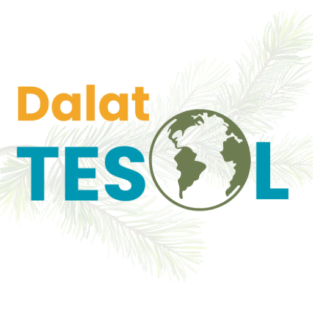By DalatTESOL
👉 This guide introduces essential academic terms in research and publishing—from journals and databases to study designs and analysis—so MA students and novice researchers can confidently navigate the academic landscape.
1. 📚 Where Research Lives: Journals, Databases & Rankings
🗞️ Academic Journal
An academic journal is a professional publication that features scholarly articles, often peer-reviewed, on a specific discipline or topic.
Example: TESOL Quarterly, System, Language Teaching Research
These journals are where research findings are shared with the world. They often follow a peer review process to ensure quality and rigor.
🔍 Academic Databases
Databases collect and index academic articles, books, and theses. They help you search for research efficiently.
Popular ones in linguistics and education:
- Scopus – Extensive, citation-focused
- Web of Science – High-impact research tracking
- ERIC – Education-specific
- Google Scholar – Easy access but less filtered
🧠 Tip: Use Boolean operators (AND, OR, NOT) to refine your search.
🏆 What Is a Q1 Journal?
Journals are ranked by quartiles (Q1–Q4) based on metrics like impact factor and citations.
- Q1 = Top 25% in a subject area
- Highly selective and prestigious
Publishing in Q1 journals is often a goal for academics seeking credibility and wider reach.
🧾 APA 7th Referencing Style
Widely used in applied linguistics and education.
In-text citation:
(Nguyen & Pham, 2023)
According to Tran (2021), …
Reference list:
Tran, A. T. (2021). Reflective practice in language education. Routledge.
🛠️ Tools: Zotero, Mendeley, EndNote for managing your citations efficiently.
2. 🧠 Concepts That Guide Your Study
📘 Theoretical & Conceptual Frameworks
- Theoretical framework: Based on existing theories (e.g., sociocultural theory, identity theory)
- Conceptual framework: Your specific constructs and how they relate to each other
They guide your research questions and analysis.
🔧 Constructs, Operationalization, and Instruments
- Construct: Abstract concept (e.g., motivation, self-efficacy)
- Operationalization: Turning abstract constructs into measurable items
- Instrument: The tool used for measurement—e.g., surveys, tests, interview guides
🧪 Validity ensures your tool measures what it should.
🔁 Reliability ensures consistency across uses.
3. 🧪 Research Types and Study Designs
📊 Quantitative vs. Qualitative
- Quantitative: Focus on numbers, statistics (e.g., surveys, test scores)
- Qualitative: Focus on meaning, experience (e.g., interviews, observations)
🔄 Mixed methods combine both approaches in one study.
🧱 Common Research Designs
- Case Study – In-depth look at one class or learner
- Action Research – Teacher inquiry to improve practice
- Experimental / Quasi-Experimental – Testing cause-effect relationships
- Cross-sectional / Longitudinal – One-time vs. over time
🛠️ Tools:
- SPSS, JASP (for quantitative stats)
- NVivo, Atlas.ti (for qualitative coding)
4. 📥 Data Collection and Analysis
✍️ Data Collection
Gathering information through:
- Quantitative: surveys, tests
- Qualitative: interviews, classroom observations, open-ended responses
📈 Data Analysis
- Quantitative: Mean, standard deviation, t-test, regression
- Qualitative: Coding, theme development, discourse analysis
🧠 Triangulation = using multiple methods or data sources to strengthen credibility.
5. 📝 Writing and Publishing Your Work
📄 Manuscript
Your research paper before it’s published. Includes:
- Introduction
- Literature Review
- Methodology
- Results / Findings
- Discussion
- Conclusion
- References
🚗 CARS Model (Swales’ Move Structure for Introductions)
- Move 1: Introduce topic and importance
- Move 2: Identify research gap
- Move 3: Present your study’s aim or contribution
Example: While learner autonomy has been widely studied, little is known about how Vietnamese students use AI tools to foster it. This study investigates…
🔍 Research Gaps
Why your study matters:
- Topical gap: The issue hasn’t been researched
- Contextual gap: Neglected population (e.g., rural EFL teachers)
- Methodological gap: Prior studies had weak design
- Theoretical gap: No clear or current theory applied
6. 🔒 Research Ethics and Integrity
- Informed Consent – Participants must understand and agree to take part
- Confidentiality – Protect participant identity and data
- Avoiding Plagiarism – Always cite sources
- Salami Slicing – Don’t divide one study into multiple weak papers
🛠️ Use Turnitin or Grammarly Premium to check for originality.
🧩 Final Thoughts
These terms are not just jargon—they are the building blocks of credible research. Understanding them empowers you to:
- Read academic literature effectively
- Plan and write your own study
- Prepare for publication or thesis defense
- Engage in scholarly conversations with confidence
DalatTESOL encourages you to bookmark this guide, revisit it often, and share it with peers. Every strong researcher begins with strong foundations.
